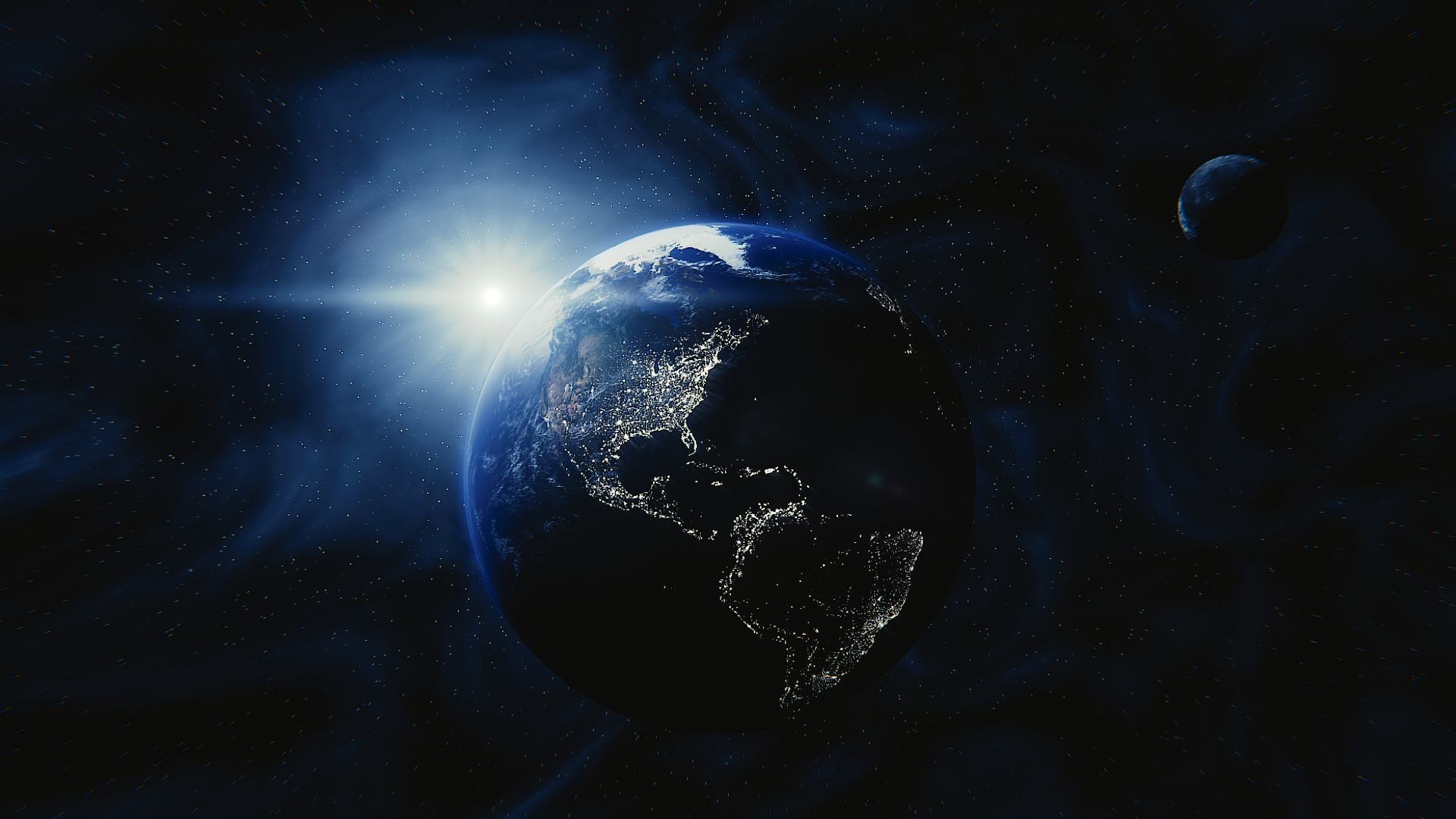
Nighttime lights as an indicator of the Anthropocene
The Earth seen from space
The emission of artificial light at night is a spectacular manifestation and component of the Anthropocene, visible from space.
For about 3.7 billion years, life evolved with day-night cycles. Living beings thus have a biological clock that controls their circadian rhythm [1].
Over the past 100 years, this natural rhythm has been greatly disrupted by the increasing emission of artificial light at night by humans [1].
Despite policies advocating regulation of the emission of nocturnal light, the trend continues or even accelerates: a recent study showed that the brightness of the night sky has increased by 10% per year between 2011 and 2022 [2].
This light pollution significantly affects the behavior and physiology of living beings [1], including humans of course [3]. Notably, it would contribute significantly to insect declines by influencing insect movements, foraging, reproduction and predation [4].
The emission of light at night can also be seen as a waste of energy which aggravates climate change [5].
Light pollution is therefore much more than a problem concerning astronomy and star gazing [5]. By reducing our ability to observe the night sky and the number of stars we can see, it can also affect our reflective abilities and our spirituality [6].
In conclusion, the emission of light at night is inextricably linked to the Anthropocene: first, its detection from space symbolizes the considerable place that we have taken on this planet; second, it modifies the environment on a global scale, induces a significant alteration of life and reduces our ability to marvel at our world.
Key messages
Based on satellite images, NASA scientists produce images of the Earth at night, which show the lights emitted by human activity. Needless to say that our activities can be detected from afar! From left to right: Europe and Africa; Asia and Oceania; America. Source of images: NASA (https://earthobservatory.nasa.gov/features/NightLights).
To understand something in its totality, the best is sometimes to take a step back. What could be better than photos of the Earth taken from space to realize what the Anthropocene is? The emission of artificial light at night by human activity is detectable from space and immediately gives a good idea of the place humans occupy on Earth.
The Earth seen from all angles
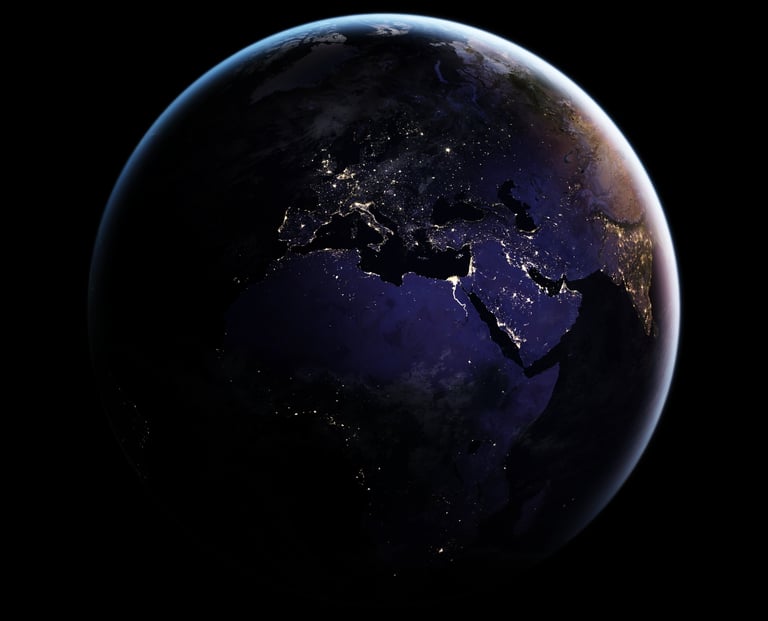

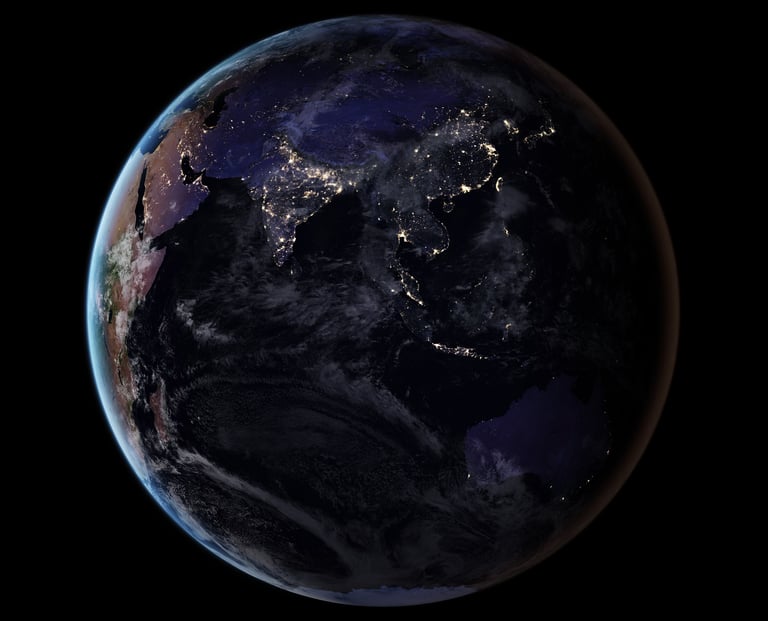


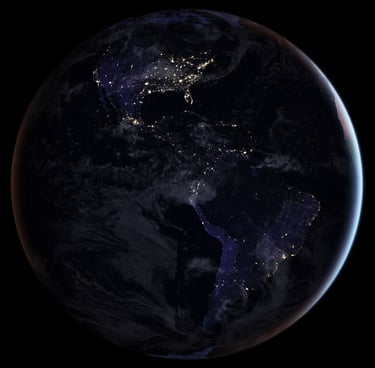
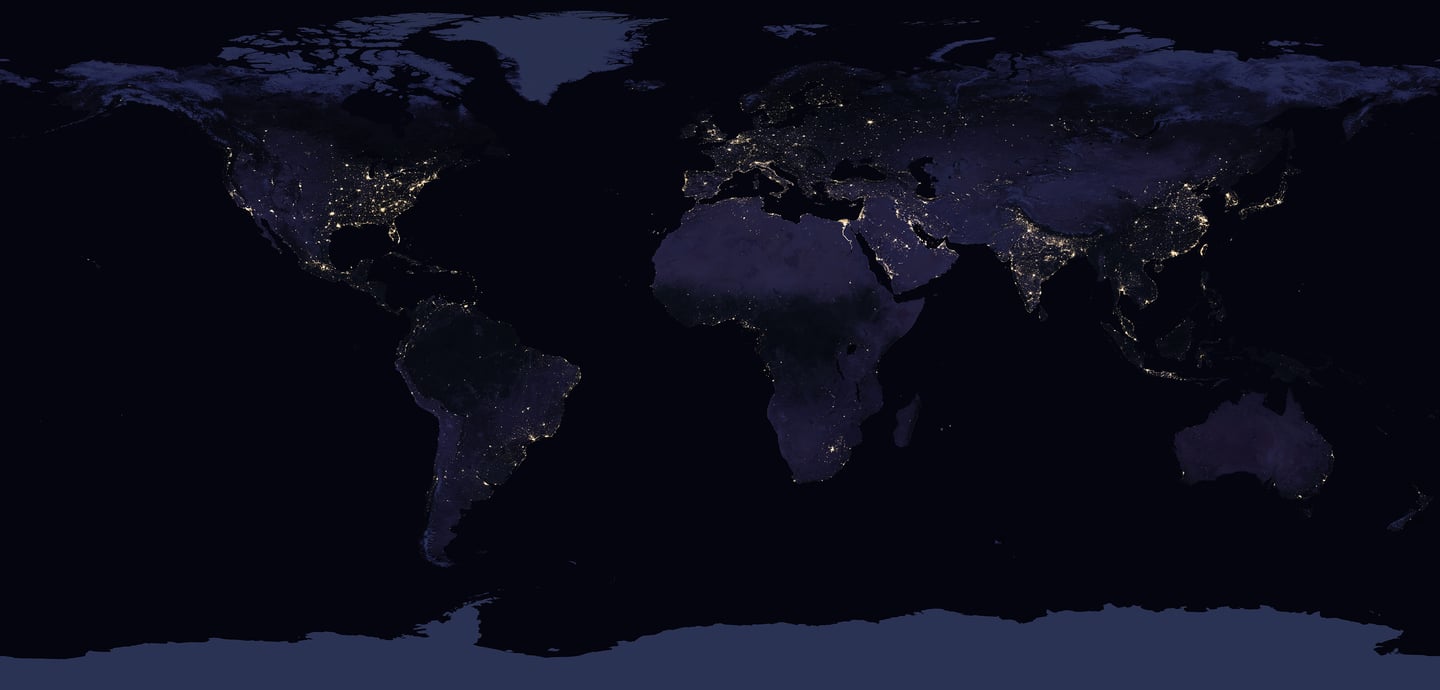

Here is a reconstructed flat maps of the Earth at night. This image already gives an idea of the human footprint on the Earth surface. With the exception of inhospitable spaces (poles, deserts, high mountains, etc.) and a few environments still poorly anthropized (Amazonia, Central Africa, etc.), nighttime light emissions cover a large part of the land surface. Source of image: NASA (https://earthobservatory.nasa.gov/features/NightLights).
Flat maps of the Earth at night
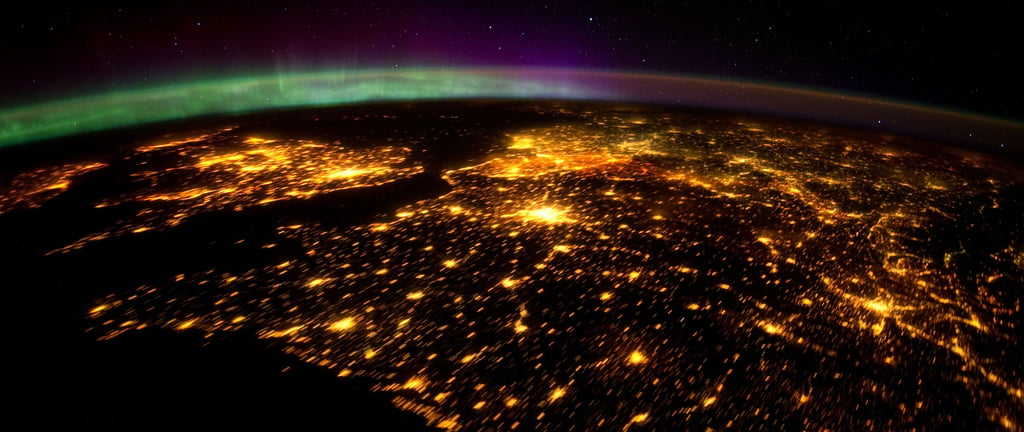

Photos of Western Europe taken from the International Space Station (top) and from a satellite (bottom right and bottom left). As it is a very anthropized area, Western Europe is particularly emitting nocturnal light Source of images: NASA (https://earthobservatory.nasa.gov/features/NightLights).
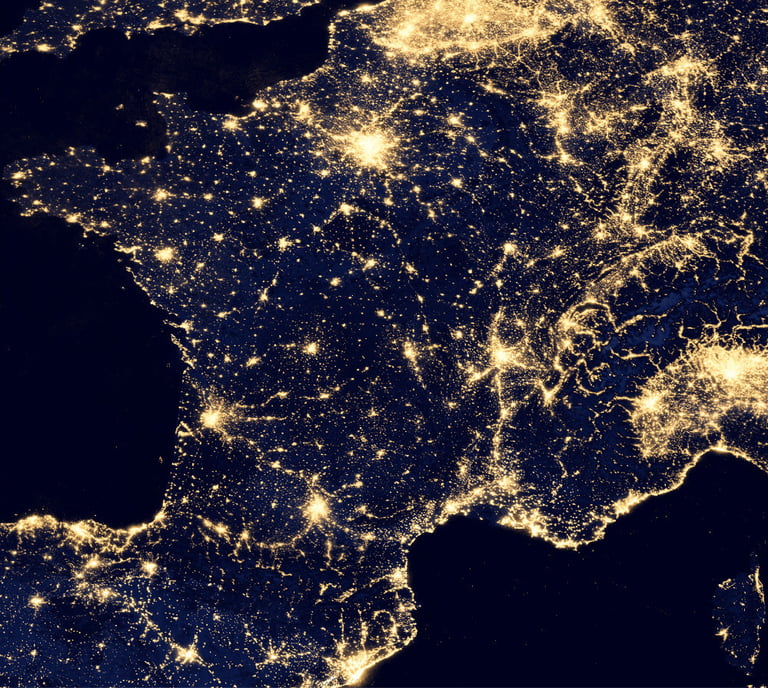

Photos of western Europe taken by night from space
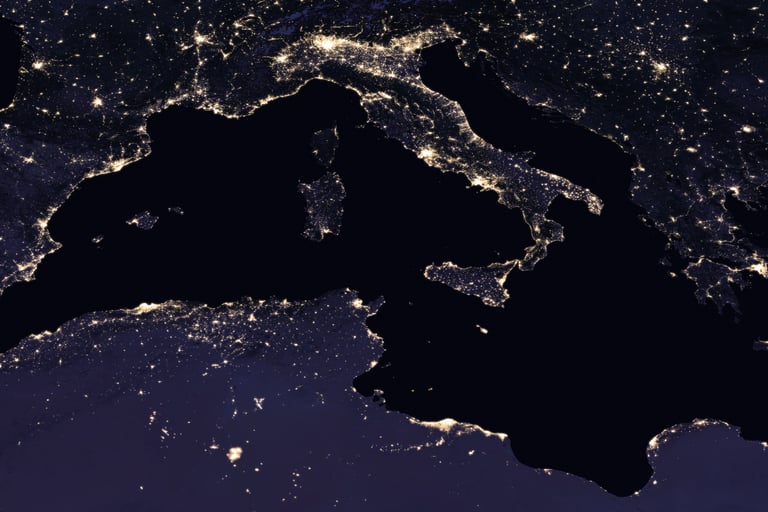

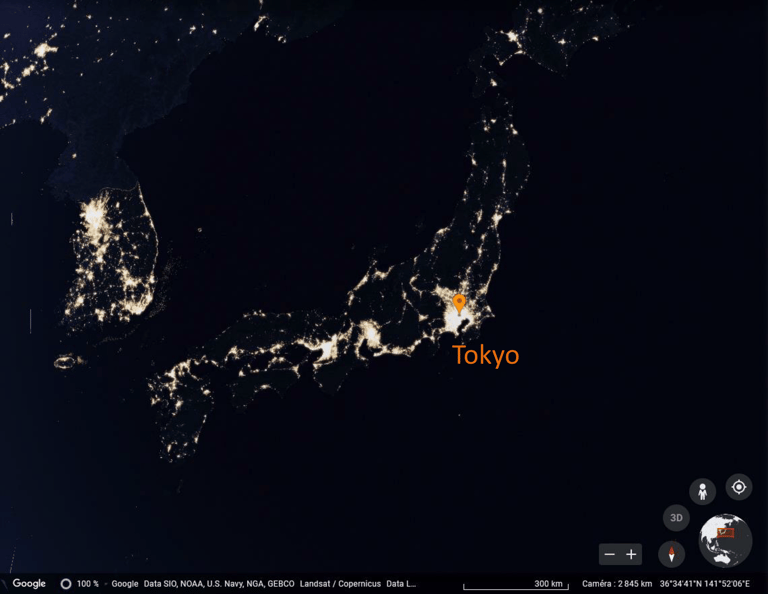

A world tour of some places greatly emitting nocturnal light
Densely populated urbanized areas are logically the most emitters of artificial light at night. As urbanization is growing very rapidly, the emission of nocturnal light follows the same trend: between 2011 and 2022, the brightness of the night sky would thus have increased by 10% per year [2].
Images show here give some examples of areas very urbanized and therefore particularly emitting nocturnal light, with the Nile Valley in Egypt, the New Delhi region in northern India, northern Italy, the eastern coast of the United States, Japan and the Korean peninsula, and southeastern China (Hong-Kong) and Taiwan.
Source of images : Google Earth (https://earth.google.com/web/), from NASA images.

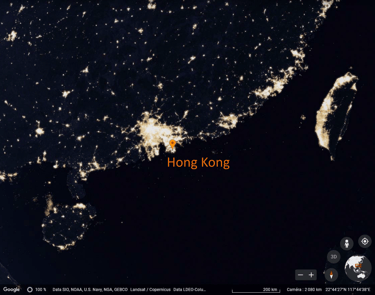




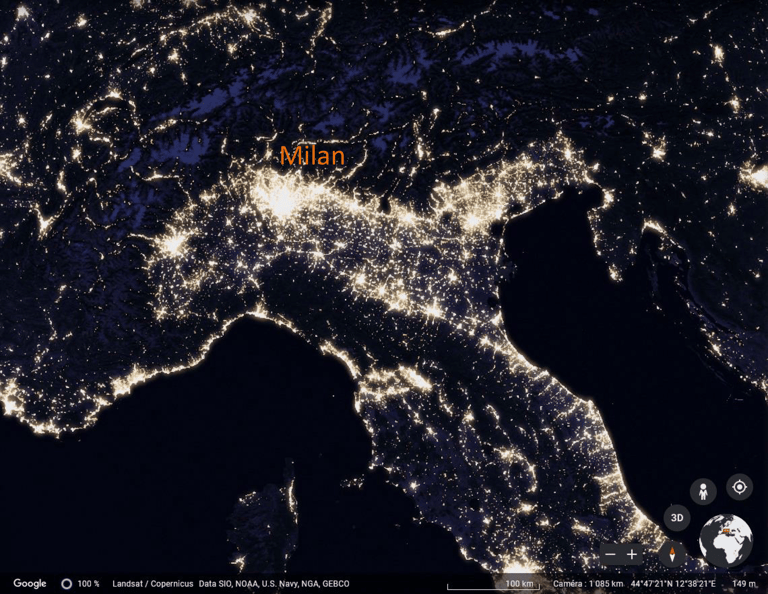

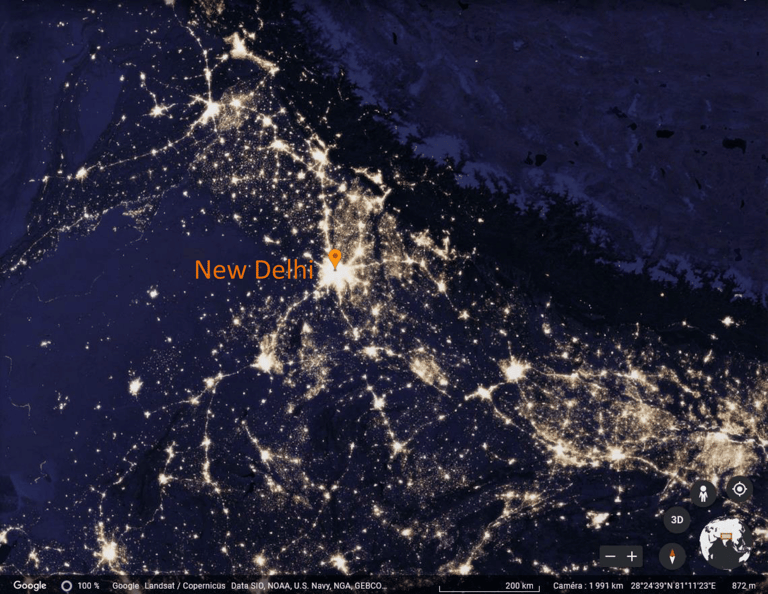

References
[1] K.J. Gaston, M.E. Visser et F. Hölker, « The biological impacts of artificial light at night: the research challenge », Phil. Trans. R. Soc., vol. 370, no 1667, p. 20140133, 2015. https://royalsocietypublishing.org/doi/10.1098/rstb.2014.0133
[2] C.C.M. Kyba, Y.Ö. Altintas, C.E. Walker et M. Newhouse, « Citizen scientists report global rapid reductions in the visibility of stars from 2011 to 2022 », Science, vol. 379, no 6629, p. 265-268, 2023. https://www.science.org/doi/10.1126/science.abq7781
[3] K.M. Zielinska-Dabkowska, « Make lighting healthier », Nature, vol. 553, p. 274-276, 2018. https://www.nature.com/articles/d41586-018-00568-7
[4] A.C.S. Owens, P. Cochard, J. Durrants, B. Farnworth, E.K. Perkin et B. Seymoure, « Light pollution is a driver of insect declines », Biological Conservation, vol. 241, p. 108259, 2020. https://doi.org/10.1016/j.biocon.2019.108259
[5] Martin Morgan-Taylor, « Regulating light pollution: More than just the night sky », Science, vol. 380, no 6650, p. 1118-1120, 2023. https://www.science.org/doi/10.1126/science.adh7723
[6] Shaoni Bhattacharya, « What are we doing to tackle light pollution? », BBC Sky at Night Magazine, 2023. https://www.skyatnightmagazine.com/space-science/what-doing-tackle-light-pollution
